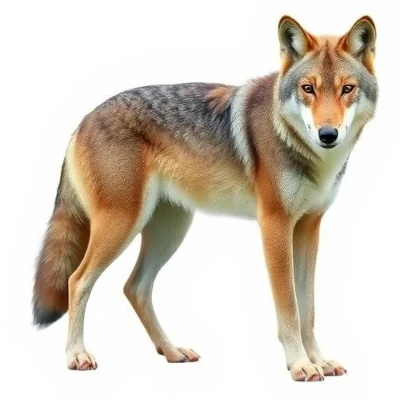
The European Wolf (Canis lupus lupus) is the subspecies of gray wolf that inhabits the forests and mountains of Europe. This iconic predator, once heavily persecuted, is now the subject of protection programs as it gradually recolonizes its former territory.
The European Wolf is a large canid, measuring between 70 and 90 cm at the withers and weighing between 30 and 50 kg (males are larger than females). Its coat is generally gray-brown with lighter shades on the belly, although color variations exist depending on the region. It has a powerful musculature, long legs adapted for running, and a bushy tail.
The European Wolf (Canis lupus lupus) belongs to the Canidae family. Here is its scientific classification:
The European Wolf occupies a wide variety of habitats: boreal forests, mountains, plains, and even some semi-desert areas. It is mainly found in Eastern Europe (Poland, Romania, Balkans), the Alps, the Pyrenees, and is gradually recolonizing Western Europe (France, Germany, Belgium). A wolf needs a large territory (200 to 1000 km² depending on available resources).
Unlike its American cousin, the European Wolf lives in family packs usually consisting of 5 to 8 individuals (an alpha pair and their offspring). The pack hunts and raises the young collectively. Wolves communicate through howling, body postures, and scent marking. They are territorial animals that travel great distances.
The European Wolf is a strict carnivore that feeds mainly on wild ungulates (deer, roe deer, wild boar, chamois). When these prey are scarce, it may attack livestock, leading to conflicts with farmers. An adult wolf consumes an average of 3 to 5 kg of meat per day.
The European Wolf is protected by the Bern Convention and the EU Habitats Directive. After nearly becoming extinct in the 20th century, its populations are slowly recovering (approximately 17,000 individuals in Europe). The main threats are poaching, habitat fragmentation, and conflicts with human activities.
The European Wolf (Canis lupus lupus) shares its common ancestor with other subspecies of wolves and wild canids:
Observing a European Wolf in the wild is extremely rare and difficult, but here are some tips for those who wish to try the experience: